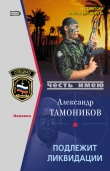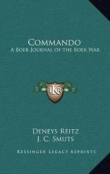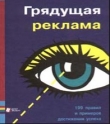
Текст книги "Психология массовых коммуникаций"
Автор книги: Ричард Харрис
Жанры:
Психология
,сообщить о нарушении
Текущая страница: 38 (всего у книги 43 страниц)
Какие отношения устанавливаются между людьми, которые общаются при помощи электронной почты, чатов и листсерверов? Являются ли они неглубокими, безличными, враждебными, опасными или помогают освободиться от ощущения ограниченности человека, который живёт в определённом месте? Кроме того, такое общение лишает людей возможности видеть друг друга, так что они не могут оценить внешность и статус собеседника. Паркс (Parks, 1996) провёл обзорное исследование взаимоотношений людей в Интернете и обнаружил, что 60% респондентов утверждали, что установили личные отношения on-line. Женщины чаще, чем мужчины, заводили электронных друзей, независимо от своего возраста и семейного положения. Почти все они общались со своими друзьями по электронной почте, каждая третья, кроме того, пользовалась телефоном, письмами и общалась лично. Эти взаимоотношения развивались так же, как и традиционная дружба. Так что мы видим, что компьютеры не только не изолируют людей друг от друга, но и помогают установить дружеские связи. У Чинолт (Chenault, 1998) есть интересное рассуждение о том, как приобрести друзей и выразить свои чувства, используя компьютерные коммуникации.
Модуль 12.5. Восстание в мировой www-сетиХотя первый кровавый мятеж сапатистских повстанцев в самом южном мексиканском штате Чиапас в 1994 году был довольно коротким и его быстро подавили, сражение продолжается и сейчас не только в жизни, но и в киберпространстве. Сапатистская Армия национального освобождения (САНО) передаёт революционные послания через Интернет и пользуется электронной почтой и web-сайтами, с помощью которых она связывается с отдельными людьми и с обществом в целом, минуя правительственную цензуру. Групповой web-сайт Ya Basta! собирает деньги для повстанцев и предоставляет последние новости о местной ситуации. Лидер организации субкоманданте Маркос пишет коммюнике на компьютере, встроенном в его грузовик. Эти послания затем переносятся на диски и отправляются на web-сайт. Использование повстанцами новых технологий вынудило ведущие мексиканские телекомпании, такие, как Televisa, говорить в репортажах и о повстанцах, поскольку публика узнавала о них из других источников. Остальные радикальные группы во всём мире, например Ирландская республиканская армия, исламская фундаменталистская организация Хамас и повстанцы из Перу, называющие себя Sendero Luminoso («Светлый путь»), все имеют свои web-сайты и используют электронную почту (I. Vincent, 1996).
Модуль 12.6. Примеры творческого подхода к новым коммуникационным технологиямРассмотрим следующие примеры:
1. В 1994 году профессор Томас Найсли из колледжа Линчбург в Вирджинии обнаружил, что некоторые вычисления на новом микропроцессоре «Пентиум» были ошибочными. Он проверил свои вычисления на нескольких компьютерах и везде последовательно обнаруживал ошибку. Когда он связался с производителем «Пентиумов», «Интелом», ему не ответили. В отчаянии Найсли обратился в сеть Интернет и спросил у других пользователей, нет ли у них таких же проблем. Через шесть дней «Интел» ответил на обращение Найсли. Хотя компания сперва настаивала на том, что проблема эта очень незначительна, растущее беспокойство в обществе и падение акций на бирже уверило их в обратном. Через два месяца после первого звонка Найсли в «Интел» во всех «Пентиумах» стали бесплатно заменять микросхемы (Wresch, 1996).
2. В основном информационная революция не затронула бедное население, хотя есть и некоторые исключения. Несколько Интернет-терминалов были открыты для общественного доступа и установлены в Санта-Монике в Калифорнии. Их цель была дать возможность бездомным людям поговорить о своей жизни и проблемах. Отвечая на вопросы «Почему вы не работаете?», бездомные назвали в числе своих проблем: а) негде принять душ и сменить одежду и б) нет возможности охранять их скудную собственность, пока они находятся на работе. Как только общество осознало их проблемы (о них не знали раньше), городские власти и Армия спасения отвела специальные помещения и установила душевые, стиральные машины и шкафчики (Wresch, 1996).
3. В мае 1998 полиция в Пулмане, штат Вашингтон, обратилась к общественности, попросив опознать студентов, которые принимали участие в беспорядках в Вашингтонском государственном университете. Они открыли web-сайт и поместили в нём 40 фотографий, сделанных офицерами полиции, журналистами и просто прохожими. На этот сайт пришло 12 000 отзывов в первые же два дня, и более 100 предполагаемых бунтовщиков были идентифицированы (Notebook, 1998).
4. Роман Майкла Джойса 1987 года «Полдень, Легенда» – это история о рекламисте, который решил, что попавшая в аварию машина, которую он только что увидел, принадлежала его бывшей жене. Этот роман является классикой в жанре художественного гипертекста. Это не книга, а скорее программа, в которой читатель сразу вникает в хитрые взаимосвязи героев. Роман построен явно в нелинейном изложении. Эта программа мешает любым попыткам читателя понять сюжет насколько возможно ясно. Защитники жанра считают, что чтение это напоминает настоящий диалог и переживание. А противники называют весь роман «несмешной цифровой постмодернистской шуткой» (Lillington, 1998).
Заключение
Всё это снова приводит нас к вопросу: «Зачем изучать психологию, в особенности когнитивную психологию СМИ?». В сущности, масс-медиа предлагают нам опыт, который возникает в результате взаимодействия нашего сознания с содержанием СМИ. СМИ воздействуют на наше сознание: они дают нам идеи, изменяют наши установки, рассказывают, что собой представляет окружающий нас мир. Эти построения в нашем сознании (то есть наша воспринимаемая реальность) превращаются в каркас, на основе которого мы создаём интерпретации нашего опыта в целом. Таким образом, чтение газет, просмотр телепередач, прослушивание музыки и радиопередач – всё это по большей части когнитивные феномены.
В каком-то смысле продукция СМИ – это искусство, творческая выдумка. Но как когда-то сказал Пикассо: «Искусство – это ложь, сквозь которую мы видим правду». То же самое верно и применительно ко СМИ. Участие в создании передачи – это игра, говорил Оскар Уальд: «Я люблю игру актёров. Она намного реальнее жизни».
То же мы могли бы сказать и о СМИ. Жизнь подражает искусству, искусство подражает жизни. В конце концов, становится трудно отличить одно от другого.
–
[1] Определённый артикль делает предмет или существо, о котором идёт речь, более конкретным, похоже на местоимение «тот» в русском языке. (Прим перев.)
[2] Слоган основывается на игре слов: клубный коктейль «club cocktail» (англ.) и дубинка «club» (англ.). (Прим. перев.)
[3] Listservers – компьютерная программа, организующая списки электронных подписчиков.
[4] Usenet – этот термин появился в 1980 году и обозначает систему on-line, в которой происходят дискуссии групп-участников.
[5] Intifada – арабское слово, обозначающее восстание; имеется в виду начавшаяся в конце 1987 года борьба палестинцев на оккупированных Израилем территориях Западного Берега реки Иордан и в секторе Газа.
Библиография
Abel, E. (1984). Television in international conflict. In: A. Arno W. Dissayanake (Eds.). The news media and national and international conflict (p. 63–70). Boulder , CO : Westview Press.
Abelman, R. (1989). From here to eternity: Children's acquisition of understanding of projective size on television. Human Communications Research, 15, 463–181.
Aberncthy, A. M. (1992). The information content of newspaper advertising. Journal of Current Issues and Research in Advertising, 14(2):, 63–68.
Abramson. P. R., Hayashi, H. (1984). Pornography in Japan : Cross-cultural and theoretical considerations. In: N. M. Malamuth E. Donnerstein (Eds.). Pornography and sexual aggression (p. 173–183). Orlando . FL: Academic Press.
Abramson. P. R., Perry, L, Seeley, T. Seeley, D., Rothblatt, A. (1981). Thermographie measurement of sexual arousal: A discriminant validity analysis. Archives of Sexual Behavior, 70(2), 175–176.
Ahn, W.-K., Brewer, W. F., Mooney. R. J. (1992). Schema acquisition from a single example. Journal of Experimental Psychology: Learning, Memory, and Cognition. 18, 391–412.
Alali, A. O., Eke, К . К . (Eds.). (1991). Media coverage of terrorism: Methods of diffusion. Newbury Park , CA : Sage.
Alesandrini. K. L. (1983). Strategies that influence memory for advertising communications. In: R. J. Harris (Ed.). Informationprocessing research in advertising (p. 65–82). Hillsdale , NJ : Lawrence Eribaum Associates.
Alien, M., D'Alcssio, D., Brezgel, K. (1995). A meta-analysis summarizing the effects of pornography II: Aggression after exposure. Human Communication Research, 22, 258–283.
Alien, M., Emmers, Т ., Gebhardt, L., Giery, M.A. (1995). Exposure to pornography and acceptance of rape myths. Journal of Communication, 45(1), 5–26.
Alsop, R. (1988, January 26). Advertisers retreat from making direct pitch to the gay market. Wall Street Journal, p. 33.
Altheide, D. L. (1976). Creating reality: How TV news distorts events. Beverly Hills, CA: Sage. Alvarado. M., Gutch, R., Wollen, T. (1987). Learning the media: An introduction to media teaching. London: Macmillan.
Alwitt, L. R, Deighton, J., Grimm, J. (1991). Reactions to political advertising depend on the nature of the voter-candidate bond. In: F. Biocca (Ed.). Television and political advertising: Vol. I. Psychological processes (p. 329–350). Hillsdale, NJ: Lawrence Eribaum Associates.
Amador. O. G. (1988). Latin lovers. Lolita, and La-Bamba. Americas, 40(4), 2–9.
Amaral. R., Guimaraes, C. (1994). Media monopoly in Brazil. Journal of Communication, 44(4). 26–38. Andersen. P. A., Kibler. R. J. (1978). Candidate valence as a predictor of voter preference. Human Communication Research, 5, 4–14.
Anderson, D. R. (1985). On-line cognitive processing of television. In: L. F. Alwitt A. A. Mitchell (Eds.). Psychological processes and advertising effects (p. 177–199). Hillsdale, NJ: Lawrence Eribaum Associates.
Anderson, D. R. (1998). Educational television is not an oxymoron. The Annals of the American Academy of Political and Social Science, 557, 24–38.
Anderson, D. R., Burns, J. (1991). Paying attention to television. In: J. Bryant D. Zillmann (Eds.). Responding to the screen: Reception and reaction processes (p. 3–25). Hillsdale, NJ: Lawrence Eribaum Associates.
Anderson. D. R., Field, D. E. (1991). On-line and off-line assessment of the lelevision audience. In: J. Bryant D. Zillmann (Eds.). Responding to the screen: Reception and reaction processes (p. 199–216). Hillsdale, NJ: Lawrence Eribaum Associates.
Andreasen, M. S. (1994). Patterns of family life and television consumption from 1945 to the 1990s. In: D. Zillmann, J. Bryant, A. C. Huston (Eds.). Media, children, and the family: Social scientific, psychodynamic, and clinical perspectives (p. 19–36). Hillsdale NJ: Lawrence Eribaum Associates.
Apter, M. J. (1982). The experience of motivation: The theory of psychological reversals. San Diego, CA: Academic Press.
Arias, M. B. (1982). Educational television: Impact on the socialization of the Hispanic child. In: G. L. Berry C. Mitchell-Kernan (Eds.). Television and the socialization of the minority child (p. 203–211). New York: Academic Press.
Arms, R. L., Russell, G. W, Sandilands. M. L. (1979). Effects on the hostility of spectators of viewing aggressive sports. Social Psychology Quarterly, 42, 275–279.
Armstrong, G. В ., Neuendorf; K. A., Brentar, J. E. (1992). TV entertainment, news, and racial perceptions of college students. Journal of Communication, 42(3), 153–176.
Assman, H. (1987 a). La iglesia electronica у su impacto en America latina (The electronic church and its impact in Latin America). San Jose, Costa Rica: DEI. Assman, H. (1987 b). Phenomenal growth of sects, electronic church related to continent's poverty. Latin America Press, 19(16), 5–6.
Atkin, C., Arkin, E. B. (1990). Issues and initiatives in communicating health information. In: C. Atkin L. Wallack (Eds.). Mass communication and public health (p. 13–40). Newbury Park, CA: Sage.
Atkin, C., Greenberg, В ., McDermott, S. (1983). Television and race role socialization. Journalism Quarierly, 60(3), 407–114.
Austin, E. W., Roberts, D. F., Nass, C. I. (1990). Influences of family communication in children's television-interpretation processes. Communication Research, 17, 545–564.
Bacchetta, V (1987). Brazil's soap operas: ''Huge dramas where the country portrays itself. Latinamerica Press. 19(9), 5–6.
Bachen, С . М . (1998). Channel One and the education of American youths. The Annals of the American Academy of Political and Social Science, 557, 132–147.
Bachy, V. (1976). Danish "permissiveness" revisited. Journal of Communication, 26, 40–43.
Backer, T. E., Rogers, E. M., Sopory, P. (1992). Designing health communication campaigns: What works? Newbury Park, CA: Sage.
Baggaley, J. P. (1988). Perceived effectiveness of interactional AIDS campaigns. Health Education Research: Theory and Practice, 3, 1–17.
Baggett, P. (1979). Structurally equivalent stories in movie and text and the effect of the medium on recall. Journal of Verbal Learning and Verbal Behavior, IS, 333–356.
Bald, M. (1998, May). Africa's wonderchild. World Press Review, 45, p. 22.
Ball, S., Bogatz., G. A. (1970). The first year of Sesame Street: An evaluation. Princeton, NJ: Educational Testing Service.
Bancroft, J., Mathews, A. (1971). Autonomic correlates of penile erection. Journal of Psychosomatic Research, 15, 159–167.
Bandura, A. (1977). Social learning theory. Englewood Cliffs, NJ: Prentice-Hall.
Bandura, A., Ross, D., Ross, S. A. (1961). Transmission of aggression through imitation of aggressive models. Journal of Abnormal and Social Psychology, 63, 575–582.
Bandura, A., Ross, D., Ross, S. A. (1963). Imitation of film-mediated aggressive models. Journal of Abnormal and Social Psychology, 66, 3–11 Bandura, A., Walters. R. H. (1963). Social learning and personality development. New York: Holt, Rinehart Winston.
Barbaree, H. E., Marshall, W. L., Lanthier, R. D. (1979). Deviant sexual arousal in rapists. Behavior Research and Therapy, 17, 215–222.
Barcus, F. E. (1980). The nature of television advertising to children. In: E. L. Palmer A. Dorr (Eds.). Children and the faces of television: Teaching, violence, and selling (p. 273–285). New York: Academic Press.
Barcus, F. E. (1983). Images of life on children's television. New York: Prager.
Barnett, M. A., Klassen, M., McMinimy, V, Schwarz, L. (1987). The role of self– and other-oriented motivation in the organ donation decision. Advances in Consumer Research, 14, 335–337.
Barnhurst, K. G., Mutz, D. (1997). American journalism and the decline in event-centered reporting. Journal of Communication, 47(4), 27–53.
Baron, R. A. (1979). Heightened sexual arousal and physical aggression: An extension to females. Journal of Research in Personality, 13, 91–102.
Basil. M., Schooler, C., Reeves, B. (1991). Positive and negative political advertising: Effectiveness of ads and perceptions of candidates. In: F. Biocca (Ed.). Television and political advertising: Vol. I. Psychological processes (p. 245–262). Hillsdale, NJ: Lawrence Eribaum Associates.
Bateman, T. S., Sakano, T, Fujita, M. (1992). Roger, me, and my attitude: Film propaganda and cynicism toward corporate leadership. Journal of Applied Psychology, 77, 768–771.
Beagles-Roos, J., Gat, I. (1983). Specific impact of radio and television on children's story comprehension. Journal of Educational Psychology, 75, 128–137.
Beeman, W. O. (1984). The cultural role of the media in Iran: The revolution of 1978–1979 and after. In: A. Arno W. Dissayanake (Eds.). The news media and national and international conflict (p. 147–165). Boulder, CO: Westview Press.
Beentjes, J. W. J., van der Voort, Т . Н . A. (1989). Television and young people's reading behavior: A review of research. European Journal of Communication, 4, 451–477.
Bcllafante, G. (1995, March 27). Playing "Get the Guest". Time. 77.
Benedict, H. (1992). Virgin or vamp: How the press covers sex crimes. New York: Oxford University Press.
Berelson. B. R., Lazarsfeld, P. F, McPhee, W. N. (1954). Voting. Chicago: University of Chicago Press.
Berkowitz, L. (1965). Some aspects of observed aggression. Journal of Personality and Social Psychology, 2, 359–369.
Berkowitz, L. (1984). Some effects of thoughts on anti-and prosocial influences of media events:A cognitive neoassociation analysis. Psychological Bulletin. 95, 410–427.
Berry, G. L. (1980). Television and Afro Americans: Past legacy and present portrayals. In: S. B. Withey R. P. Abeles (Eds.). Television and social behavior (p. 231–247). Hillsdale, NJ: Lawrence Eribaum Associates.
Berry, G. L, Asamen, J. K. (Eds.). (1993). Children and television: Images in a changing sociocultural world. Newbury Park, CA: Sage.
Berry, V. T. (1992). From Good Times to The Cosby Show: Perceptions of changing televised images among black fathers and sons. In: S. Craig (Ed.). Men, masculinity. and the media (p. 111–123). Newbury Park, CA: Sage.
Biocca. F. (1990). Semiotics and mass communication: Points of intersection. In: T. Sebeok J. Umiker-Sebeok (Eds.). Semiotic web. The Hague, the Netherlands: Mouton.
Biocca, F. (Ed.). (1991 a). Television and political advertising: Vol. I. Psychological processes. Hillsdale, NJ: Lawrence Eribaum Associates.
Bird, S. E. (Ed.) (1996). Dressing in feathers: The construction of the Indian in popular culture. Boulder, CO: Westview Press.
Blatt, J., Spencer, L, Ward, S. (1972). A cognitive developmental study of children's reactions to television advertising. In: E. A. Rubinstein, G. A. Comstock, J. P. Murray (Eds.). Television and social behavior: Vol. 4. Television in everyday life: Patterns of use (p. 452–467). Washington, DC: U. S. Government Printing Office.
Block, C. (1972). White backlash to Negro ads: Fact or fantasy? Journalism Quarterly, 49(2), 253–262. Bloom. P. N. Novell, W. D. (1981). Problems and challenges in social marketing. Journal of Marketing, 45(2), 79–88.
Blumler, J. G. (1979). The role of theory in uses and gratifications research. Communication Research, 6, 9–36.
Blumler. J. G., Katz, E. (Eds.). (1974). The uses of mass communications: Currentperspectives on gratifications research. Beverly Hills: Sage. Blumler, J. G.. McLeod, J. M., Rosengren, К . Е . (Eds.). (1992), Comparatively speaking: Communication and culture across space and time. Newbury Park, CA: Sage.
Blumler. J. G., McQuail, D. (1969). Television in politics: Its uses and influences. Chicago, 1L: University of Chicago Press.
Bogart. L. (1980). Television news as entertainment. In: R H. Tannenbaum (Ed.). The entertainment functions of television (p. 209–249). Hillsdale, NJ: Lawrence Eribaum Associates.
Bogart, L. (1981). Press and public. Hillsdale, NJ: Lawrence Eribaum Associates.
Bogatz, G. A., Ball, S. (1972). The second year of Sesame Street: A continuing evaluation. Princeton, NJ: Educational Testing Service.
Bogle, D. (1973). Toms, coons, mulattoes, and bucks: An interpretive history of Blacks in American films. New York: Viking.
Boiney, J., Paletz, D. L. (1991). In search of the model model: Political science versus political advertising perspectives on voter decision making. In: F. Biocca (Ed.). Television and political advertising: Vol. I. Psychological processes (p. 3–25). Hillsdale, NJ: Lawrence Eribaum Associates.
Bollen, K. A.. Phillips, D. P. (1982). Imitative suicides: A national study of the effects of television news stories. American Sociological Review, 47, 802–809. Bordeaux. B. R., Lange, G. (1991). Children's reported investment of mental effort when viewing television. Communication Research, 18, 617–635. Borden. D. L., Harvey, K. (Eds.). (1997). The electronic grapevine: Rumor, reputation, and reporting in the new on-line environment. Mahwah. NJ: Lawrence Eribaum Associates.
Bower, G. H., Black. J. В .. Turner, T. J. (1979). Scripts in memory for text. Cognitive Psychology, II. 177–220.
Bowman, J. (1996). The dirty little secret of educational. TV The Weekly Standard. /(16–17), 22–26. Brabant, S., Mooney, L. (1986). Sex role stereotyping in the Sunday comics. Sex Roles /4(3/4), 141–148. Brcslow, L. (1978). Risk factor intervention for health maintenance. Science, 200, 908–912. Brewer, W. F., Nakamura, G. V (1984). The nature and functions ofschcmas. In: R. S. Wyer T. K. Srull (Eds.). Handbook of social cognition. Hillsdale, NJ: Lawrence Eribaum Associates.
Brosius, H. B. (1993). The effects of emotional pictures in television news. Communication Research, 20, 105–124.
Brosius, H. B., Kepplinger. H. M. (1990). The agenda setting function of television news: Static and dynamic views. Communication Research, 17, 183–211. Brown. D., Bryant, J. (1983). Humor in mass media. In: P. E. McGhee J. H. Goldstein (Eds.). Handbook of humor research (Vol. 2). New York: Springer-Verlag. Brown, D., Bryant, J. (1990). Effects of television on family values and selected attitudes and behaviors. In: J. Bryant (Ed.). Television and the American family (p. 227–251). Hillsdale, NJ: Lawrence Eribaum Associates.
Brown, J. A. (1991). Television "critical viewing skills" education: Major media literacy projects in the United States and selected countries. Hillsdale, NJ: Lawrence Eribaum Associates.
Brown, J. A. (1998). Media literacy perspectives. Journal of Communication, 4S(I) 44–57.
Brown, J. D., Campbell, K. (1986). Race and gender in music videos: The same beat but a different drummer. Journal of Communication, 36(1), 94–106.
Brown, J. D., Einsiedel, E. F. (1990). Public health campaigns: Mass media strategies. In: E. B. Ray L. Donohew (Eds.). Communication and health: Systems and applications (p. 153–170). Hillsdale, NJ: Lawrence Eribaum Associates.
Brown, J. D., Walsh-Childers, K. (1994). Effects of media on personal and public health. In J. Bryant D. Zillmann (Eds.). Media effects (p. 389–415). Hillsdale NJ: Lawrence Eribaum Associates.
Brown, N. R., Siegler, R. S. (1992). The role of availability in the estimation of national populations. Memory Cognition, 20, 406–412.
Brown, W. J., Cody, M. J. (1991). Effects of a pro-social television soap opera in promoting women's status. Human Communication Research, 18, 114–142.
Brown, W. J., Singhal, A. (1990). Ethical dilemmas of prosocial television. Communication Quarterly, 38, 268–280.
Brown, W.I, Singhal, A., Rogers, E. M. (1989). Prodevelopment soap operas: A novel approach to development communication. Media Development, 36(4), 43–47.
Bruce, S. (1990), Pray TV: Televangelism in America. London: Routiedge.
Bruno. K. J., Harris, R. J. (1980). The effect of repetition on the discrimination of asserted and implied claims in advertising. Applied Psycholinguistics, 1, 307–321.
Bryant, J. (Ed.). (1990). Television and the American family. Hillsdale, NJ: Lawrence Eribaum Associates. Bryant, J., Alexander, A. R, Brown, D. (1983). Learning from educational television programs. In: M. J. A. Howc (Ed.). Learning from television: Psychological and educational research (p. 1–30). London: Academic Press.
Bryant. J., Rockwell. S. C. (1994). Effects of massive exposure to sexually oriented prime time television programming on adolescents moral judgment. In: D. Zillmann. J. Bryant, A. C. Huston (Eds.). Media, children, and the family: Social scientific, psychodynamic, and clinical perspectives (p. 183–195). Hillsdale NJ: Lawrence Eribaum Associates.
Buchholz. M., Bynum. J. (1982). Newspaper presentation of America's aged: A content analysis of image and role. The Gerontologist, 22, 83–88.
Buckingham, D. (1993). Children talking television: The making of television literacy. London: Palmer. Buckingham, D. (1996). Critical pedagogy and media education: A theory in search of a practice. Journal of Curriculum Studies. 28(ff), 627–650.
Buckingham, D. (1998). Media education in the UK: Moving beyond protectionism. Journal of Communication, 48, 33–43.
Buerkel-Rothfuss, N. L., Mayes, S. (1981). Soap opera viewing: The cultivation effect. Journal of Communication, 31, 108–115.
Bullard. S. (1998). Gangstawulf: Examining the allure of violence in lyric form. Teaching Tolerance, 7(1), 16–19.
Burke. R. R., DeSarbo, W. S., Oliver, R. L., Robertson. T. S. (1988). Deception by implication: An experimental investigation. Journal of Consumer Research. 14, 483–494.
Busby, L. J. (1985). The mass media and sex-role socialization. In: J. R. Dominick J. E. Fletcher (Eds.). Broadcasting research methods (p. 267–295). Boston: Allyn Bacon.
Calvert, S. L. (1988). Television production feature effects of children's comprehension oftime. Journal of Applied Developmental Psychology, 9, 263–273.
Cameron. G. T, Frieske, D. A. (1994). The time needed to answer: Measurement of memory response latency. In: A. Lang (Ed.). Measuring psychological responses to media (p. 149–164). Hillsdale NJ: Lawrence Eribaum Associates.
Canadian case. (1996, June 20). Kansas State Collegian, p. 2.
Cantor, J. (1991). Fright responses to mass media productions. In: J. Bryant D. Zillmann (Eds.). Responding to the screen: Reception and reaction processes (p. 169–197). Hillsdale, NJ: Lawrence Eribaum Associates.
Cantor, J. (1996). Television and children's fear. In: T. M. Macbeth. Tuning in to young viewers: Social science perspectives on television (p. 87–115). Thousand Oaks, CA: Sage.
Cantor, J. (1998). Ratings for program content: The role of research findings. The Annals of the American Academy of Political and Social Science, 557, 54–69.
Cantor, J., Nathanson. A. I. (1996). Children's fright reactions to television news. Journal of Communication, 46(4), 139–152.
Cantor, J., Oliver, M. B. (1996). Developmental differences in responses to horror. In: J. B. Weaver R. Tamborini (Eds.). Horror films: Current research on audience preferences and reactions (p. 63–80). Mahwah, NJ: Lawrence Eribaum Associates.
Cantor, J., Sparks, G. G. (1984). Children's fear responses to mass media: Testing some Piagctian predictions. Journal of Communication, 34, 90–103.
Cantor, J., Venus, P. (1980). The effect of humor on recall of a radio advertisement. Journal of Broadcasting, 24(1), 13–22.
Cantor. M. G. Cantor, J. M. (1986). American television in the international marketplace. Communication Research, 13, 509–520. Carlson, M. (1990, September 10). A new ball game. Time, 40–41.
Carlson. M. (1996, August 5). The soap opera games. Time, 48.
Can-oil. J. S., Kerr, N. L., Alflni, J. J., Weaver, F. M., MacCount. R. J., Fcldman, V (1986). Free ргеяч and fair trial: The role of behavioral research. Law and Human Behavior, 10, 187–202.
Carveth, R., Alexander. A. (1985). Soap opera viewing motivations and the cultivation process. Journal of Broadcasting Electronic Media, 29, 259–273.
Cassata. M., Inwin, B. J. (1997). Young by day: The older person on daytime serial drama. In: H. S. No-orAI-deen (Ed.). Cross-cultural communication and aging in the United States (p. 215–230). Mahwah, NJ: Lawrence Eribaum Associates.
Centerwall, B. S. (1989 a). Exposure to television as a cause of violence. In: G. Comstock (Ed.). Public communication and behavior (Vol. 2. p. 1–58). New York: Academic Press.
Centerwall. B. S. (1989 b). Exposure to television as a risk factor for violence. American Journal of Epidemiology. 129, 643–652.
Centerwall, B. S. (1993, Spring). Television and violent crime. The Public Interest, III, 56–71.
Chaffee, S. H., Choe, S. Y. (1980). Times of decision and media use during the Ford-Carter campaign. Public Opinion Quarterly. 44, 53–69.
Chaffee, S. H., Nass, C. I., Yang, S. M. (1990). The bridging role of television in immigrant political socialization. Human Communication Research, 17, 266–288.
Chappell, C. R., Hartz, J. (1998, March 20). The challenge of communicating science to the public. The Chronicle of Higher Education, p. B7.
Check. J. V. P. (1985). The effects of violent and non-violent pornography. Ottawa, ON, Canada: Department of Justice for Canada.
Check. J. V. R, Guloien, Т . Н . (1989). Reported proclivity for coercive sex following repeated exposure to sexually violent pornography, nonviolent pornography, and erotica. In: D. Zillmann J. Bryant (Eds.). Pornography: Research advances and policy considerations (p. 159–184). Hillsdale, NJ: Lawrence Enbaum Associates.
Chen, M. (1994). The smart parent's guide to kids' ТУ . San Francisco: KQED Books.
Chenault, B. G. (1998. May). Developing personal and emotional relationships via computer-mediated communication. CMC Magazine, 1–19.
Child's play: Violent videos lure the young. (1987, June 1). Time, 31.
Christenson, P. G., Roberts, D. F. (1983). The role of television in the formation of children's social attitudes. In: M. J. A. Howe (Ed.). Learning from television: Psychological and educational research (p. 79–99). London: Academic Press.
Christianson, S., Loflus, E. F. (1987). Memory for traumatic events. Applied Cognitive Psychology, I, 225–239.
Church, G. J. (1996, January 29). Are we better off? Time, 38.
Clark, C. (1969). Television and social controls: Some observation of the portrayal of ethnic minorities. Television Quarterly, 8(2), 18–22.
Clarke, G. (1988. July 4). A reluctance to play gay. Time, 61.
Coakley, J. J. (1986). Sport in society: Issues and controversies. St. Louis, MO: Times Mirror/Mosby. Coates, T. J. (1990). Strategies for modifying sexual behavior for primary and secondary prevention of HIV disease. Journal of Consulting and Clinical Psychology, 58, 57–69.
Colburn, D. (1997, October 13). Violent TV ads common on post-season baseball. Manhattan Mercury (Washington Post syndication), p. 82.
Colfax, D., Steinberg. S. (1972). The perpetuation of racial stereotypes: Blacks in mass circulation magazine advertisements. Public Opinion Quarterly, 35, 8–18.
Collins, A. M., loftus, E. F. (1975). A spreading activation theory of semantic processing. Psychological Review, 82, 407–428.
Collins, J. (1998, March 30). Talking trash. Time, 63–66.
Comstock, G. (1985). Television and film violence. In: S. J. Apter A. R Goldstein (Eds.). Youth violence: Programs and prospects. New York : Pcrgamon Press.








